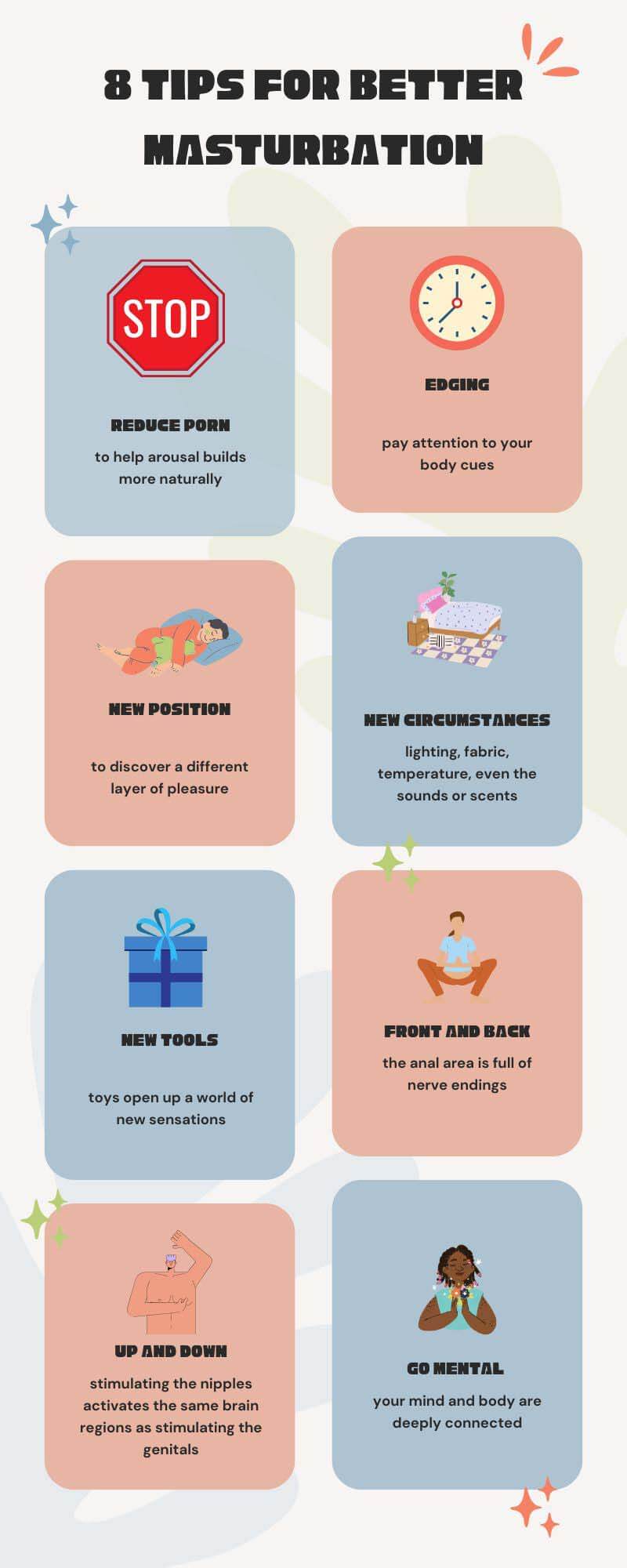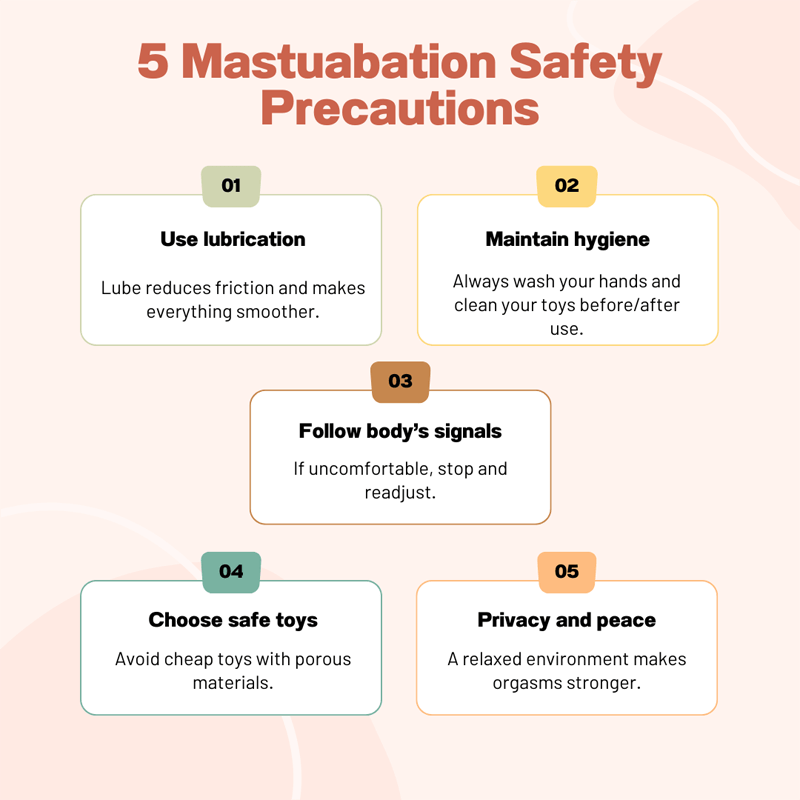Everyone knows orgasms don’t always hit the same way. Sometimes it’s mind-blowing, other times kind of “meh.” But good news: there are ways to make solo play more satisfying, more intense, more YOU. In this article we’ll dig into what makes orgasms vary, what principles tend to deepen pleasure, smart tips to switch things up, and safety stuff so everything stays fun and healthy.
We’ll start by understanding why your orgasms differ from time to time: mood, stimulation style, whether you’re tense or relaxed, etc. Then we’ll go through guiding principles — ideas like delaying gratification, trying new kinds of stimulation, and involving more of your body. We’ll drop in recent research to back up each of these, so it’s not just hearsay (yes, science is sexy).
After that, we’ll get practical: tweaks and experiments you can try in your solo time — different positions, new toys, combining spots, edging, all that. We’ll also cover safety — because intensity is great, but comfort + consent (even with yourself) matter most. Finally, we’ll answer FAQs: anal play, masturbation frequency, what’s normal, and more.
Whether you’re curious about stronger orgasms, bored of the same routine, or just want to feel more present and pleasure-aware, this is for you. Let’s unlock more powerful, fulfilling solo sessions.
Principles
Here are some core ideas (“principles”) that tend to make orgasms stronger, deeper, more satisfying. These aren’t rules so much as things worth experimenting with.
Slow / Delayed Gratification
Taking your time can lead to more powerful releases. One technique is letting yourself build arousal slowly rather than rushing toward climax. This gives your nervous system more time to ramp up pleasure signals, which can lead to a more intense orgasm when you finally let go.
There’s related research and user-data supporting the idea of delaying orgasm (often called “edging”) as a way to amplify orgasm quality. For example, a recent “Sexperiment” by the sex toy company Lioness found that the majority of users who practiced edging reported longer sessions and longer orgasms than when they didn’t edge. [1]
Also, edging shows up in sex-health sources (like WebMD) as a technique that can increase satisfaction, delay climax, help with control, and deepen orgasmic intensity. [2]
New Kinds of Stimulation
Trying new forms or patterns of stimulation — whether different pressure, textures, rhythms, or body areas — can awaken sensitivity that routine often dulls. Our nervous system adapts: what once felt super intense can become “normal,” so novelty can help re-kick things up.
A study mapping erogenous zones in the rectum (among people who practice receptive anal intercourse) showed that different zones (especially superficial anterior regions) are experienced differently, and some people report being able to orgasm from anal stimulation alone or with co-stimulation. [3] That suggests that bringing in new zones of stimulation (not just the usual genitals) can make a big difference.
Also, research on genital stimulation in women has associated greater orgasm consistency (vaginal orgasm consistency) with sensitivity from deeper vaginal or cervical stimulation rather than just shallow or external stimulation. [4]
Full Involvement
By “full involvement,” I mean engaging more of your body (mind + senses + multiple erogenous zones), not just focusing narrowly on one spot. Think mind-body, touching extra zones, perhaps combining genital + anal + nipple or other erogenous regions, or integrating fantasy, breathing, mental feelings, etc.
Here again, the anal erogenous zone mapping study is useful: many people reported needing co-stimulation (stimulating more than one region at once) to reach orgasm when using anal or vaginal stimulation. [3]
Also, a study of fMRI in women showed that orgasm (both self-induced and partner-induced) engages not just sensory/motor areas but large networks in the brain including reward, emotional, and integrative regions — so pleasure is very much whole-body, whole-mind. [5]
Better Masturbation Orgasm Tips (More Detailed)
These are ways to level up your solo sessions. Try a few, mix and match, and see how your body responds. Everyone’s different, so experimentation and patience are key.
Reduce or Stop Watching Porn
Porn can be fun, but too much of it can rewire your brain to rely only on certain visual triggers. Over time, this may dull sensitivity to other types of arousal, leaving real-life sensations feeling a bit flat. Taking a break from porn gives your body and mind space to reconnect with natural arousal, fantasy, and touch. Many people notice that when they reduce or stop, their sensitivity returns, orgasms feel more personal, and arousal builds more naturally.
Hold On and Release (Edging)
Edging is the art of taking yourself close to climax, then stopping or slowing down until arousal dips a little before building it back up again. This cycle can be repeated several times before you finally allow release. The effect is usually a stronger, more drawn-out orgasm. A recent experiment by the Lioness sex-tech company found that most users who practiced edging reported longer sessions and longer orgasms compared to times they didn’t. To make edging work for you, pay attention to your body cues, use lube if needed, and explore gentler touch or other erogenous zones during breaks. Just don’t push too far—sometimes too much stopping and starting can cause discomfort or frustration.
Try Different Positions
Changing your position may seem small, but it can completely alter how stimulation feels. The angle of your body, the muscles engaged, and the way pressure is applied all shift depending on how you sit, lie, or stand. If you normally masturbate lying on your back, try propping your hips up with a pillow, kneeling, or even squatting. If you use toys, switching angles or support can highlight new spots you didn’t know were sensitive. A fresh position can be all it takes to discover a different layer of pleasure.
Try Different Circumstances
Context matters just as much as technique. The lighting, the fabric against your skin, the temperature of the room, even the sounds or scents around you can all influence how arousal builds. For some, a cozy bed with soft silk sheets is perfect; for others, the thrill comes from a less conventional setting like a warm shower or even a discreet outdoor spot. You can also play with small variables like holding your bladder slightly, turning on erotic audio, or changing the time of day. As long as it’s safe, experimenting with circumstances can completely refresh your experience.
Try New Tools
Hands are great, but toys open up a world of new sensations. Vibrators, strokers, suction devices, butt plugs, prostate massagers, or textured sleeves all provide unique forms of stimulation. The key is to start slowly, experiment with different settings, and see how your body responds. Cleanliness and lube are non-negotiables, especially for anal toys. Rotating between different tools can also keep things exciting so you don’t get too accustomed to one sensation.
Front and Back
The anal area is full of nerve endings, and combining anal stimulation with genital touch can create an incredibly full-bodied orgasm. Research has shown that many people report reaching orgasm more easily with co-stimulation, and for some, anal touch alone is enough. If you’re curious, start small with external touches or a finger, and always use plenty of lube. Going slow, focusing on relaxation, and paying attention to hygiene will make the experience both safe and pleasurable.
Up and Down
Nipple play isn’t just “extra.” Neuroscience has shown that stimulating the nipples activates the same brain regions as stimulating the genitals. In practice, this means combining the two can significantly heighten arousal. You might try gentle touches early on, switching to firmer pressure as you get closer to climax, or playing with different textures like fingertips, tongue, or fabric. Nipple stimulation can add another layer of intensity to masturbation and create a more whole-body orgasm.
Bonus: Internal Awareness & Involvement
Your mind and body are deeply connected, and being more aware of your internal state can enhance orgasm quality. A recent psychology study found that women who were more attuned to their bodily signals—such as heartbeat, breathing, and muscle tension—reported more frequent and satisfying orgasms during masturbation. Building this kind of awareness can be as simple as slowing down your breathing, noticing sensations throughout your body, and letting your arousal grow without rushing to the finish line. Sometimes the difference between an average orgasm and a powerful one is simply being more mentally present.

Safety Precautions
Exploring ways to make masturbation better is exciting, but safety should always come first. The goal is pleasure without pain, injury, or unwanted consequences, so a few simple habits can make a big difference.
One of the most important things is using lubrication. Whether you’re using your hands, toys, or experimenting with anal play, lube reduces friction and makes everything smoother and more comfortable. Water-based lubes are the most versatile, but silicone-based options last longer and are great for water play. Never skip lube for anal stimulation—since the anus doesn’t self-lubricate, dryness can lead to micro-tears or discomfort.
Hygiene is another key factor. Always wash your hands and clean your toys before and after use. If you’re moving between anal and genital play, switch toys, use condoms on toys, or wash thoroughly in between to avoid spreading bacteria. Keeping your body and tools clean helps prevent irritation and infections.
Pay attention to listening to your body’s signals. Pleasure should never cross over into sharp pain or numbness. If something feels uncomfortable, stop and readjust. Overdoing certain techniques, like edging for too long or using very intense vibration on one spot, can cause temporary soreness or overstimulation. Letting your body rest between sessions keeps things healthier in the long run.
Another safety layer is choosing safe toys. Stick to products made from body-safe materials like medical-grade silicone, stainless steel, or glass. Avoid cheap toys with porous materials, since they can harbor bacteria and be hard to clean. Investing in quality may cost more, but it keeps your body safer and often feels much better, too.
Lastly, consider privacy and peace of mind as part of safety. Worrying about being interrupted can tense up your body and make it harder to enjoy yourself fully. Creating a safe, private environment not only reduces stress but can also make orgasms stronger, since your mind is free to focus on pleasure instead of fear.

FAQs
How to make anal masturbation better?
Anal play can feel amazing, but comfort is everything. Always use lots of lube, start slow, and relax your muscles. Some people find it helps to warm up with external touches before moving inside. Toys designed for anal play, like butt plugs or prostate massagers, can enhance the experience. And don’t forget hygiene—clean toys and clean hands are a must.
How often should I masturbate?
There’s no “right” number. For some, once a day feels natural; for others, a few times a week or even less often is perfectly fine. Masturbation only becomes a problem if it interferes with your daily life, relationships, or leaves you feeling sore and drained. Otherwise, it’s a personal rhythm that’s totally up to you.
Is it normal for teens to masturbate?
Absolutely. Most people start exploring their bodies during their teen years, and it’s a natural, healthy part of growing up. Masturbation is safe, helps release stress, and can teach young people about their sexual responses before they engage with partners. What matters is that it’s done in private, safe, and comfortable settings.
How to improve masturbation addiction?
If you feel like you’re losing control—masturbating too often, skipping responsibilities, or relying on it to cope with stress—you may be dealing with compulsive behavior. Cutting down slowly, finding new stress outlets like exercise or hobbies, and setting time limits can help. If it feels overwhelming, talking to a therapist or counselor can give you better strategies for regaining balance.
Is workout good for orgasm?
Yes, workouts can boost your sex life and solo play. Exercise increases blood circulation, raises energy levels, and helps you feel more confident in your body. Strengthening your pelvic floor muscles (through Kegels or yoga) can even improve orgasm intensity. So yes—squats and stretches can be a secret weapon for better orgasms.
To Wrap Up
Masturbation isn’t just about release—it’s about exploring what makes your body feel alive, relaxed, and satisfied. Orgasms may vary from one day to the next, but with some patience, experimentation, and awareness, you can make them stronger and more fulfilling. Whether it’s slowing down with edging, switching up positions, trying toys, or involving more of your body, there’s no shortage of ways to play.
The bottom line? Listen to your body, keep it safe, and give yourself permission to experiment. Stronger orgasms aren’t just possible—they’re waiting for you to discover them.
References
1. Lee, A. (2024, January 11). Edging made my orgasms better (and my sessions longer). Lioness. https://lioness.io/blogs/sex-guides/edging-made-my-orgasms-better-and-my-sessions-longer
2. Pathak, N. (2025, August 20). What is Edging in Sex? Webmd. https://www.webmd.com/sex/what-is-edging-sex
3. Zaliznyak, M., Walton, A. B., Stelmar, J., Isaacson, D., Gaither, T. W., Knudson, G., & Garcia, M. M. (2025). Anal sex practices and rectal erogenous zone maps among men and women of diverse sexual orientations: an anatomic-map based questionnaire study. Sexual medicine, 13(3), qfaf037. https://doi.org/10.1093/sexmed/qfaf037
4. Brody, S., Klapilova, K., & Krejčová, L. (2013). More frequent vaginal orgasm is associated with experiencing greater excitement from deep vaginal stimulation. The journal of sexual medicine, 10(7), 1730–1736. https://doi.org/10.1111/jsm.12153
5. Wise, N. J., Frangos, E., & Komisaruk, B. R. (2017). Brain Activity Unique to Orgasm in Women: An fMRI Analysis. The journal of sexual medicine, 14(11), 1380–1391. https://doi.org/10.1016/j.jsxm.2017.08.014


